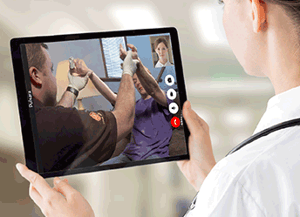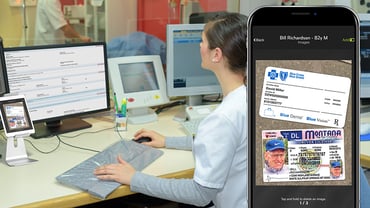Pulsara Around the World - 2025 Recap and January 2026
December Recap After an incredibly busy events year with 102 conferences, trade shows, and sponsorships, December was on the slower side for us, with...

EDITOR'S NOTE: Special thanks to Kinsie Clarkson (Pulsara's Product Marketing Specialist, 2020-2025) for writing today's blog post. You can connect with her on LinkedIn.
This is part 2 of our blog series on the Top 5 Challenges in Rural Healthcare. Check out the other posts in this series here.
__
From access issues to finding funding, rural healthcare faces a variety of unique challenges. As COVID-19 swept the nation, many of these challenges have only intensified. Chief among these challenges is covering the high costs associated with continuing operations.
Recently, prominent rural healthcare authorities in Georgia and Colorado Springs sat down for exclusive interviews with Pulsara to weigh in on these challenges, as well as some of the innovative solutions they believe can help.
In this 5-part blog series, we will explore each of the top 5 challenges that rural healthcare currently faces, and how new technology could be key to solving some of them. Today, we'll discuss the second major challenge: Funding.
For many rural hospitals, making enough money to keep the lights on and the doors open can be a struggle. Even before COVID-19, more than 500 rural hospitals were at an immediate risk of closure. And with a pandemic now piled on top of the existing challenges, rural hospitals that were barely keeping their heads above water before are sinking. Some are being forced to close their doors. Across the U.S., 16 rural facilities had to close their doors in 2020. Seven rural hospitals in Georgia have closed since 2010. More than 800 rural hospitals are now at a high or immediate risk of closure, many reportedly due to low financial reserves or a high dependence on nonpatient service revenues. And as rural hospitals continue to close, the access problem only continues to get worse.
 Efforts to provide rural hospitals with aid are helping. The CARES Act, passed in response to COVID-19 in March 2020, included $10 billion for rural hospitals. Those funds are helping, but according to Brock Slabach, vice president for member services with the National Rural Health Association, “It (rural hospital relief funding) was like a defibrillator after COVID. It shocked the system back to life. But, unfortunately, the system is still in intensive care.”
Efforts to provide rural hospitals with aid are helping. The CARES Act, passed in response to COVID-19 in March 2020, included $10 billion for rural hospitals. Those funds are helping, but according to Brock Slabach, vice president for member services with the National Rural Health Association, “It (rural hospital relief funding) was like a defibrillator after COVID. It shocked the system back to life. But, unfortunately, the system is still in intensive care.”
Rural institutions are already at a disadvantage when it comes to generating revenue. They serve a fraction of the patients seen by larger institutions in urban areas, which means that it costs more to serve each patient in rural areas. Where larger hospitals are able to offer more lucrative elective procedures and have a much higher percentage of privately insured patients, many of the folks in rural communities don’t have health insurance at all.
 The cost of providing care to patients in rural areas tends to be quite a bit higher than the cost of the same treatment for patients in urban settings. James McLaughlin, the Director of Community Paramedicine at Ute Pass Regional Health Service District in Teller County, Colorado, explained the challenge his agency faced in funding their telemedicine program. “In a major metropolitan area like Denver or New York City or San Francisco, you're going to be able to get a lot of return on your investment per capita, right? With $100,000, I’m going to be able to treat 100, 200 people a week. But the reality is, in a rural setting where the distances are further apart, the resources available are less, and the cost of all the services available is more. With a telehealth program, I'm only going to see 40 patients in a couple of months. And people go, ‘Oh, well, you only saw….’ Yeah, I only saw 40 patients—but because that was the only service available, the impact is so much greater.”
The cost of providing care to patients in rural areas tends to be quite a bit higher than the cost of the same treatment for patients in urban settings. James McLaughlin, the Director of Community Paramedicine at Ute Pass Regional Health Service District in Teller County, Colorado, explained the challenge his agency faced in funding their telemedicine program. “In a major metropolitan area like Denver or New York City or San Francisco, you're going to be able to get a lot of return on your investment per capita, right? With $100,000, I’m going to be able to treat 100, 200 people a week. But the reality is, in a rural setting where the distances are further apart, the resources available are less, and the cost of all the services available is more. With a telehealth program, I'm only going to see 40 patients in a couple of months. And people go, ‘Oh, well, you only saw….’ Yeah, I only saw 40 patients—but because that was the only service available, the impact is so much greater.”
The higher cost of patient care in rural areas makes it more difficult to find adequate funding to continue to treat them. However, telehealth could be a key part of helping rural facilities do more with fewer resources. During COVID-19, Ute Pass Regional Health Service District has been using telehealth as a force-multiplier with their paramedics. McLaughlin explained their situation: “With our current workforce, we run three ambulances and cover 539 square miles. There was no way we were going to be able to meet the potential demand of COVID without coming up with a unique and interesting way to address it.”

To solve the issue, Ute Pass Regional Health Service District set up each individual provider inside the ambulance with the ability to conduct calls via telehealth. “We were able to take these ambulances, split up a crew, and have one crew member run one call, while another crew member runs another call,” said McLaughlin. “It becomes a force multiplier for us. We can take one ambulance and double the output of that crew.”
Not every patient that calls 911 needs transport, and it isn’t always the best course of treatment for the patient. Transporting patients unnecessarily is also costly. Empowering medics to start a telehealth consultation to determine the appropriate next steps saves time and resources—and ultimately saves the department money.
 And as telehealth guidelines change, using mobile technology in patient care may become even more cost efficient. Prior to the pandemic, reimbursement regulations prevented clinicians from being able to bill for telehealth encounters. But after COVID-19 necessitated the loosening of telehealth restrictions in early 2020, that’s no longer the case. Telehealth visits can now be considered a billable encounter, making it a more feasible option for providing medical services.
And as telehealth guidelines change, using mobile technology in patient care may become even more cost efficient. Prior to the pandemic, reimbursement regulations prevented clinicians from being able to bill for telehealth encounters. But after COVID-19 necessitated the loosening of telehealth restrictions in early 2020, that’s no longer the case. Telehealth visits can now be considered a billable encounter, making it a more feasible option for providing medical services.
Though the cost of patient care is higher in rural areas, rural health is still striving to provide patients with top-notch care. Rural clinicians are among the leading innovators in using technology to help improve patient care across the United States. As reimbursement regulations shift and telehealth becomes more popular, hopefully the changes can help provide rural health systems with a measure of relief.
Access to care is the largest, most complex issue currently facing rural health—and not for the reasons you might think. Learn more at Top 5 Challenges in Rural Healthcare - Part 1: Access.

December Recap After an incredibly busy events year with 102 conferences, trade shows, and sponsorships, December was on the slower side for us, with...

Editor's Note: In July 2025, EMS1 and Fitch & Associates released their annual EMS trend survey, What Paramedics Want, proudly sponsored by Pulsara....
![[PRESS RELEASE] Published Research Finds Up to 31% Faster STEMI Treatment Times in Rural Hospital Setting with Pulsara](https://www.pulsara.com/hubfs/_1_website-page-blog-assets/pulsara-hosp-teams-assign-cardio-stemi-rn-1200x701.jpg)
Published research shows how using Pulsara, alongside standardized field activation and a focus on stakeholder relationships, improves STEMI care and...